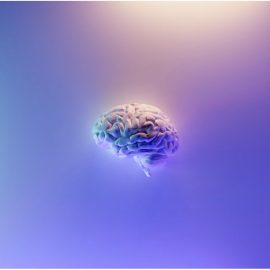
How effective is music for managing pain? Should music be considered a form of medicine?
Music is more than just a source of entertainment—it’s a powerful medicine. According to neuroscientist and musician Daniel J. Levitin, music can help alleviate pain without the side effects of medications.
Here’s how music and pain relief go hand-in-hand.
Music for Pain Management
According to Levitin, music and pain relief have a strong connection. Pain is the most common reason people seek medical help, and doctors typically prescribe medications like aspirin or opioids to treat it. While these drugs can be effective, they often come with serious drawbacks. Over-the-counter pain medications can damage the stomach and liver when used long-term, while opioids carry risks of addiction and require increasingly higher doses to maintain the same effect.
(Shortform note: Pain management practices and aggressive pharmaceutical marketing in the 1990s led to the widespread overprescription of opioid painkillers, particularly medications like OxyContin. However, as regulations later tightened, many users shifted to heroin, then to illicitly manufactured fentanyl—50-100 times stronger than morphine. Multiple factors intensified this evolving crisis: health care policies favoring medication over comprehensive treatment, chronically underfunded addiction services, economic distress in affected communities, and persistent stigma. These elements combined to transform what began as a prescription medication problem into a complex public health emergency spanning decades.)
In contrast, Levitin explains that music can alleviate pain by:
- Redirecting attention away from discomfort
- Improving mood, which can make pain feel less intense
- Triggering the brain to release its own natural painkillers
- Enhancing pain relief through the power of positive expectation—when people believe music will help, it often works better
(Shortform note: Scientists are investigating which specific elements of music are most effective for pain relief. Research shows that music with stable rhythms particularly helps by regulating heart rate, breathing patterns, and other physiological processes, creating a more balanced state that reduces pain sensitivity. While pleasant, non-arousing music generally decreases pain perception, different types of music offer varying benefits—with a person’s favorite music showing particular promise due to its ability to modulate neural responses throughout the cortex, brainstem, and spinal cord. Interestingly, for older adults, the effectiveness of music interventions remains consistent regardless of the specific genre or delivery method.)
How effective is music-based pain management? Research shows that using music during and after medical procedures can reduce the amount of pain medication patients need. For instance, patients who listen to music during surgery often require less anesthesia, and those who listen after surgery often ask for fewer pain medications. Scientists are now studying which specific elements of music—like speed, musical key, or choice of instruments—work best for pain relief.
(Shortform note: Despite its proven benefits, music therapy for pain management remains relatively uncommon in traditional medical settings. Limited high-quality research and lack of standardization make it difficult for the medical community to fully embrace this treatment approach, while conventional medicine tends to prioritize pharmacological interventions. Additionally, limited awareness among health care professionals, resource constraints, and skepticism toward nontraditional therapies have hindered widespread adoption. However, growing interest and ongoing research suggest music therapy may become more common as a complementary treatment option.)
The Future of Music as Medicine
According to Levitin, learning more about music’s effects on the brain and body have opened up new possibilities for the role of music in health care. Scientists are exploring how to use existing research and new technology to develop increasingly sophisticated approaches to music-based treatment.
(Shortform note: This scientific progress has begun to attract more significant institutional interest and investment in the field. For example, the National Institutes of Health’s Sound Health initiative awarded $20 million in 2019 for research on music’s therapeutic applications for neurological disorders. While approximately 60 clinical trials on music interventions were ongoing as of 2021, researchers also acknowledge that rigorous evidence remains limited, partly due to challenges in recruiting sufficient participants for large-scale studies.)
Levitin argues that using digital technology could help health care providers develop more targeted music therapy treatments for a variety of conditions. He envisions AI systems connected to health trackers that monitor biometric data—including heart rate, breathing patterns, and muscle tension—to select the most therapeutic music for each individual patient. This personalized approach would offer greater precision than current standardized methods, potentially expanding music therapy’s effectiveness across a wider range of health conditions.
(Shortform note: One company already turning this vision into reality is MediMusic, a British health tech startup that has developed an AI-powered platform delivering personalized music therapy to reduce pain, anxiety, and stress in patients. The system analyzes music’s “digital DNA” and patient demographics to create targeted 20-minute playlists delivered through their MediBeat device with physiological monitoring via a wrist sensor. The platform’s Digital Drip Technology adjusts tracks based on heart rate feedback and provides health care professionals with performance metrics. NHS trials demonstrated up to 22% reduction in heart rate among dementia patients during Covid-19.)






